Harman Kardon Citation I Pre-Amplifier
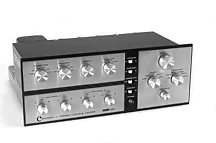
This is a very nice pre-amplifier, it is built like a tank, and has some very interesting features. The most interesting feature of this pre-amp is that there is several different phono equalization settings for properly playing a variety of old recordings. There are six different turnover settings (tape, 600, riaa, lp, aes, 78) and six different rolloff settings (flat, 78, lon, aes, riaa, lp). The combination of these EQ parameters will cover the vast majority of vintage recordings, making a lot of very interesting music available. This pre-amp also has provisions for two phono inputs, allowing two turntables to be used, one setup for modern disks, and one set up for vintage disks.
This pre-amp also uses stepped attenuators for the tone controls, which sound better, are more accurate and are much less intrusive when set flat than a typical potentiometer based circuit.
The Citation I uses pairs of gain stages with feedback in each gain block. This makes each gain block very low distortion and closer to an ideal gain stage for highest performance.
This unit also has buffered center channel outputs and phase reverse circuitry. The unit also has a blend control and a variety of stereo and mono controls to help making old or poorly recorded material listenable.
The construction and layout are first rate, as can be expected from the Citation line. The power supply is robust and well filtered. The construction is tag-board based which makes replacing components fairly easy. This is a complex unit and does contain a lot of parts. The tube compliment reflects that complexity, and consists of four 12AX7 tubes and five 12AT7 tubes. These tubes are mounted horizontally at the back of the unit and can be changed without opening the unit or even removing it from it's wooden case. Like all vintage gear, the RCA jacks are too close together for some high quality RCA connectors.
I have designed a capacitor board to replace the four can capacitors. The cap board also allows for the use of much larger capacitors in the power supply. This board fits in place of the original can caps and mount to the existing holes using standoffs and 4-40 bolts. The plans for this cap-board are available for download below.
I have also designed new circuit boards to hold replacement RCA jacks. These boards are made using FR4 fiberglass circuit board material and hold the new RCA jacks a lot more securely than the original phenolic boards did. I have increased the spacing slightly to provide as much space for modern oversized RCA jacks as possible. The plans for these boards are available below.
I listened to this pre-amp at various stages of the rebuild. I changed the cap board before powering the unit up for the first time. I was very skeptical that this pre-amp could be remotely state of the art given all the stuff that appears in the circuit looking at the schematic. It turns out that with the controls set flat, the signal path is remarkable short and clean. 90% of the circuitry is switched out. The first listening test was very positive. The unit sounded a bit wooly and not quite flat in frequency response. But that is to be expected with all the paper caps and old carbon comp resistors in the circuit. But even with the old and drifted parts, the unit showed real promise. I decided that it was worth spending the time and money to bring the unit back to tip-top shape.
It's no simple job to do a resistor and cap swap on this unit; this is no Dyna PAS. It took about 40 solid, head down hours of work to change out all the resistors and caps. There are some very tough parts to replace tucked into the guts of the unit. The parts on the various switches can most easily (not necessarily easy) be replaced by unsoldering the connecting wires and removing the whole switch from the chassis. The parts for the left channel (A) are mounted on a recessed tag-board and are harder to replace than the right (B) parts.
After the rebuild, the unit has really impressed me with it's sound quality. I assumed that it would sound pretty good, but given the number of switches and such, I really didn't think that it would actually sound as good as my modified Counterpoint pre-amp or my SRPP linestage. This pre-amp is as good or actually a bit better than the Counterpoint. The Citation I sounds a bit more natural and relaxed than the Counterpoint. It is very comparable to my SRPP linestage. Although it has much more functionality. The phono stage is very quiet and also very good sounding. The Counterpoint pre-amps are known for their excellent phono stages, the Citation is every bit as good, and a bit more quiet.
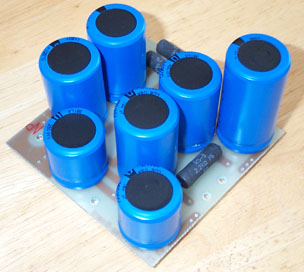
Harmon Kardon Citation I Schematic
Citation I Replacement Parts List
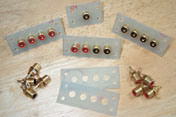
|
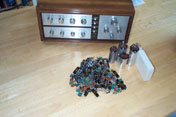
|
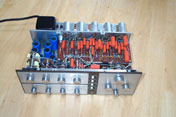
|
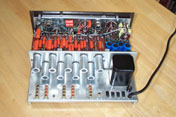
|
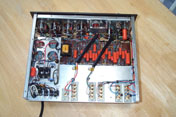
|
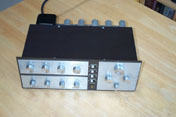
|
Address
Sheldon Stokes
PO Box 1158
Grantham NH 03753
Help:
Copyright 2019, SDS Labs
All original images and work copyright SDS Labs
